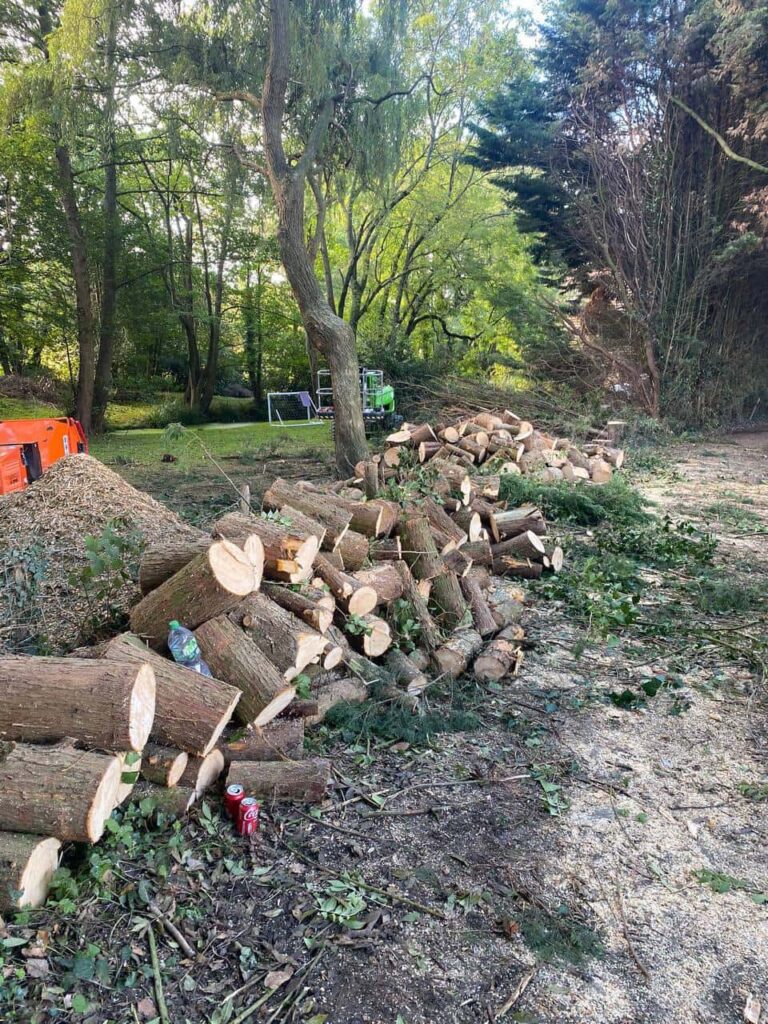Stump Removal for Better Soil Health: How it Benefits Your Plants
Tree stumps left after tree removal are often seen as an eyesore or a potential tripping hazard, but they also have a significant impact on soil health. Stump removal is more than just a matter of aesthetics or convenience; it is a crucial step for improving soil quality and creating a healthier environment for your garden plants. At Biggleswade Tree Surgeons, we specialise in professional stump removal services in Biggleswade, Bedfordshire, helping homeowners maintain gardens that are both beautiful and beneficial to plant life. Here’s why stump removal is essential for better soil health and how it can enhance the vitality of your plants.
1. Reduces Competition for Nutrients
A tree stump left in the ground may no longer grow, but its roots continue to occupy valuable space in the soil, competing with nearby plants for essential nutrients and water. This competition is particularly challenging for younger plants or new garden beds that require nutrient-rich soil for growth.
Stump removal eliminates this competition, allowing the soil to replenish its nutrient levels and become more hospitable to new plants. By freeing up these nutrients, plants and grass in the surrounding area can grow more vigorously and establish healthy root systems.
2. Prevents Soil-Borne Diseases and Pests
A decaying stump is a natural target for various pests, including termites, beetles, and fungi. Over time, these pests can multiply and spread, potentially affecting the health of nearby plants. Furthermore, the decomposition process of a stump often introduces fungal growth and other pathogens into the soil, increasing the risk of soil-borne diseases.
Removing the stump prevents these pests and pathogens from gaining a foothold, creating a healthier environment for your garden. With stump removal, the soil is less likely to harbour harmful organisms, allowing your plants to thrive without the threat of disease or pest infestation.
3. Improves Soil Structure and Aeration
Stumps and their underlying root systems compact the soil around them, reducing aeration and water infiltration. Healthy soil requires a loose structure that allows roots to access oxygen and water easily, both of which are essential for plant growth. Stump removal helps to loosen the soil, improving aeration and water movement.
After removing the stump, the soil can be aerated and enriched, creating an ideal environment for root growth. This improved soil structure is particularly beneficial for flowering plants, shrubs, and garden beds, allowing roots to expand and absorb nutrients more efficiently.
4. Increases Available Planting Space
Leaving a stump in your garden restricts available planting space, limiting your options for new plants, shrubs, or trees. Removing the stump frees up this area, enabling you to make full use of your garden and plant new greenery where the stump once stood.
Whether you’re looking to plant a new tree, add a flower bed, or expand your lawn, stump removal gives you the flexibility to create the garden layout you envision. This open space also allows for improved landscape design and can increase the overall appeal and functionality of your outdoor area.
5. Enhances Soil pH Balance
Decomposing tree stumps can alter the pH balance of the surrounding soil, potentially making it too acidic for some plants. As the wood breaks down, it releases organic compounds that can disrupt the soil’s natural balance, making it challenging to establish certain types of vegetation.
Stump removal helps restore the soil’s pH levels to a more neutral state, allowing for a greater diversity of plants to grow. When the soil is balanced, you have more options for creating a garden that is both diverse and resilient, with plants better able to absorb nutrients and thrive.
6. Reduces the Spread of Fungal Spores
When left in the ground, stumps can harbour fungi that produce spores, which spread through the soil and air. While some fungi are harmless, others can harm surrounding plants and potentially affect soil quality. The presence of certain types of fungi can limit the types of plants you can grow, especially if they are prone to fungal infections.
Stump removal effectively stops the spread of these fungal spores, preserving soil health and preventing damage to neighbouring plants. A fungus-free environment allows plants to grow without the risk of infection, resulting in a healthier and more resilient garden.
Conclusion
Stump removal is an essential practice for maintaining soil health and creating a productive garden environment. By removing stumps, you not only improve the aesthetic of your outdoor space but also enhance nutrient availability, prevent pests and diseases, and increase planting options. At Biggleswade Tree Surgeons, we are committed to helping homeowners in Biggleswade, Bedfordshire, achieve the best possible soil conditions for their gardens through professional stump removal services.
If you’re looking to revitalise your garden and promote healthier soil, contact Biggleswade Tree Surgeons today. Our experienced team will help you transform your garden into a vibrant and thriving outdoor space, free from the limitations of lingering tree stumps. Let us assist you in creating a garden that is as healthy as it is beautiful, giving your plants the best possible foundation for growth.
Call us on: 01767 660 596
Click here to find out more about Biggleswade Tree Surgeons
Click here to complete our contact form and see how we can help with your tree needs.

